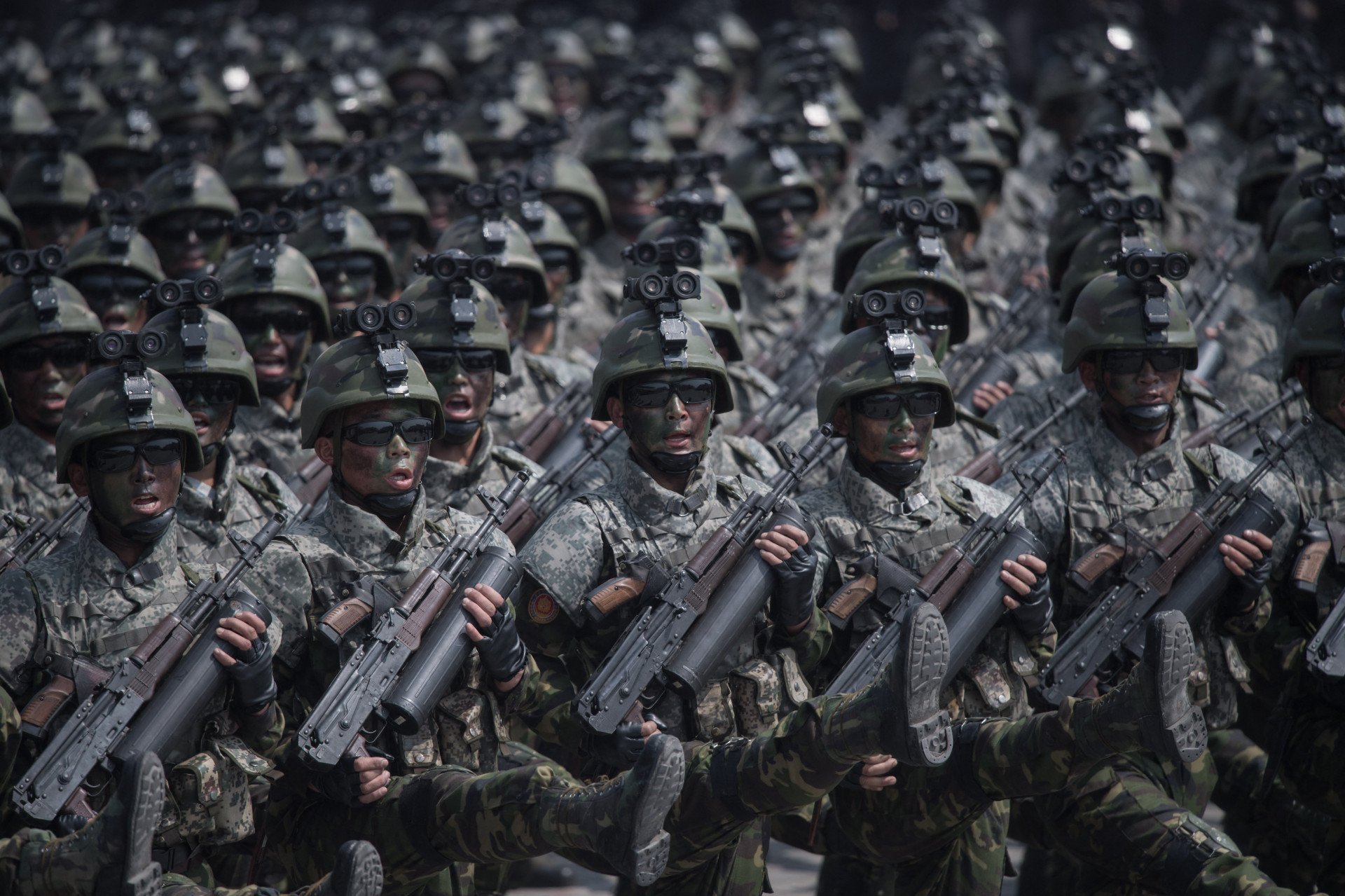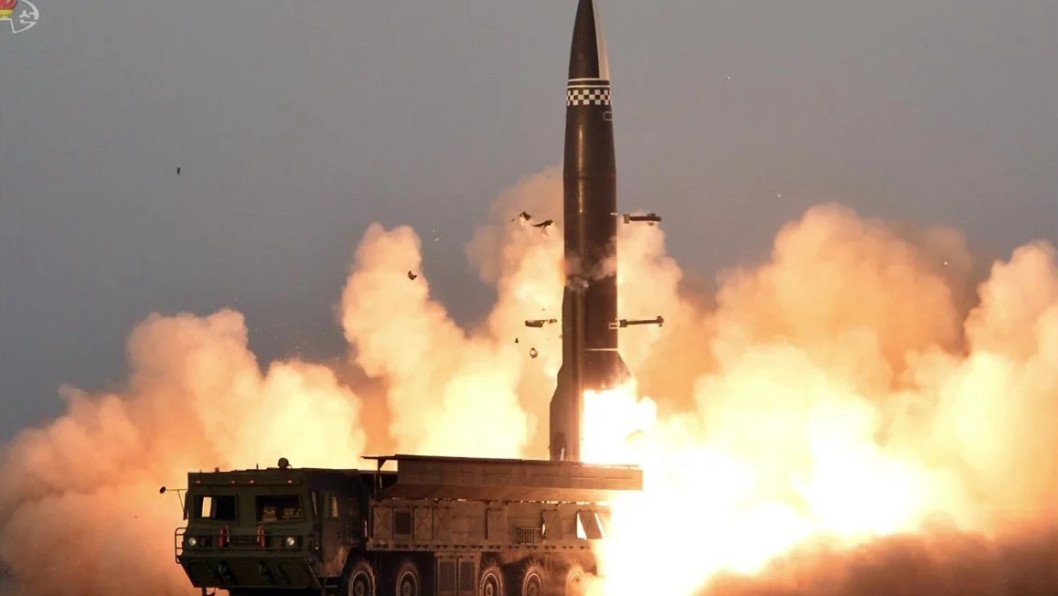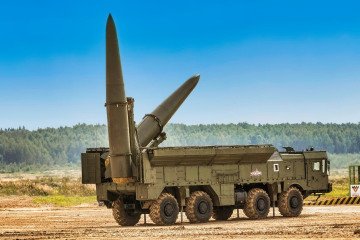- Category
- War in Ukraine
How Russia Is Supercharging North Korea’s War Machine

Russia and North Korea’s deepening alliance is fast-tracking Pyongyang’s military ambitions. In return for assisting Moscow’s war in Ukraine, North Korea is gaining access to Russia’s advanced technology and weaponry, upgrading the Kim regime's war machine.
Between 75% and 100% of artillery shells used by some Russian military units are made in North Korea, according to Russia’s internal Defense Ministry reports, a Reuters investigation revealed.
Top US commander, Admiral Samuel Paparo, head of US Indo-Pacific Command, warns that the military support that North Korea is giving Russia in its war on Ukraine is a worldwide security risk, as Moscow provides critical military assistance in return.
North Korea is sending “thousands, maybe hundreds of thousands of artillery shells” to Russia and, in return, he expects North Korea to receive air-defense and surface-to-air missile support, Paparo told the Senate Armed Services Committee on 10 April 2025.
“It’s a transactional symbiosis where each state fulfills the other state’s weakness to the mutual benefit of each state,” Paparo added.
Gen Xavier Brunson, commander of US Forces Korea, said that North Korea has advanced development of its military capabilities, including hypersonic weapons. North Korea “boasts a Russian-equipped, augmented, modernized military force of over 1.3 million personnel,” Brunson added.
-3e495585fff46b2c2b9fa03978a062bd.jpg)
Russia and North Korea signed a strategic partnership in June 2024, deepening their growing alliance. Since then, North Korea has reaped major benefits from Russia’s war in Ukraine, generating over $20 billion for its economy.
The Pyongyang-Moscow ties strengthened rapidly, granting nearly 10 thousand visas for North Koreans to Russia. Moscow has agreed to modernize North Korea’s drug industry, such as producing antibiotics, and even sanctioned North Korean apples are now for sale at major Russian supermarkets.
The most alarming advancement, however, is the rapid modernization of North Korea’s military. Under Kim Jong Un, the regime has accelerated weapons development with apparent support from Moscow.
How has North Korea assisted Russia’s war in Ukraine
North Korea sent an estimated 15,000 soldiers to fight alongside Russian troops late last year, and thousands of them have been killed or injured.
For nearly two years, North Korea has been shipping artillery to Russia to wage war and terror on Ukraine. The Open Source Centre (OSC ) tracked 64 shipments over 20 months carrying nearly 16,000 containers and millions of artillery rounds for use against Ukraine, including a shipment as recent as March 17, Reuters reported.
Kyrylo Budanov, Ukraine’s military intelligence chief, said that North Korea has supplied 120 long-range self-propelled artillery systems and 120 multiple launch rocket systems to Russia from the end of 2024.
Without help from the DPRK (i), the Russian army shelling of Ukrainian defensive positions would have been cut in half
North Korea has undoubtedly reaped rewards for its assistance in Russia’s war in Ukraine. Experts suggest their strategic partnership is far less about defending Russia’s “sovereignty, security and territorial integrity” and more about “upgrading Kim Jong Un’s war machine.”
How has Russia advanced North Korea's military tech?
Leveraging Russia’s war in Ukraine, North Korea’s military has gained real-world combat experience, resolving long-standing issues with artillery and missile accuracy. Experts say the partnership enables Kim Jong-un to pursue his strategic goals more aggressively.
Russia has already advanced North Korea’s military technology, facilitating the enhancement of its conventional weaponry and munitions production capabilities. RAND warns Western countries to try to prevent their cooperation from spilling over into a bigger problem.
“The DPRK (i) is significantly benefiting from receiving Russian military equipment, technology, and experience, rendering it more capable of waging war against its neighbors,” the Deputy US Ambassador to the U.N., Dorothy Camille Shea, said. “In turn, the DPRK will likely be eager to leverage these improvements to promote weapons sales and military training contracts globally.”
Most ominously, North Korea could receive Russian technology advancing its nuclear and missile programs, particularly improving the accuracy of North Korea's intercontinental ballistic missile (ICBM) program, RAND reported.
Airborne Early Warning and Control (AEW&C) aircraft
North Korea has converted a civilian Ilyushin Il-76 into an Airborne Early Warning and Control (AEW&C) aircraft, the same model Russia uses for its A-50U. Satellite imagery shows the modified Il-76 with a large mounted radar.
Test flights began in March 2025, and the aircraft was personally inspected by its leader, Kim Jong Un.
Russia’s A-50U aircraft can track fighter jets up to 300 kilometers away and detect cruise missiles at 200 kilometers.
The similarities to Russia’s A-50U suggest Pyongyang may have acquired sensitive military technology from Moscow, with Russian expertise likely aiding the transformation. Internal components may also have connections to Russia, according to Seoul’s Joint Chiefs of Staff spokesperson Lee Sung-jun.

One-way attack drones
In March 2025, Kim Jong Un oversaw a test flight of new self-detonating suicide drones equipped with artificial intelligence.
These new drones are capable of “tracking and monitoring different strategic targets and enemy troops’ activities on the ground and the sea,” the Korean Central News Agency (KCNA) reported, adding that Kim Jong Un is planning to expand production capabilities.
James Patton Rogers, executive director of the Cornell Brooks Tech Policy Institute and drone expert, said that the drone was likely developed with Russian assistance, and is evidence of the "fruits" of the Russian-North Korean partnership.
North Korea is expanding its one-way strike drone fleet, including a model unveiled last year that closely resembles Russia’s Lancet-3. Experts suggest the design may have come via Russia and Iran.
Ballistic missile enhancements
North Korea is expanding a key facility that produces short-range missiles, many of which are reportedly being supplied to Russia.
The February 11 Plant, located in Hamhung, is part of the Renson machine-building complex and is the only known site producing solid-fuel Hwasong-11 ballistic missiles.
North Korea’s Hwasong-11 quasi-ballistic missile series (KN-23/24) closely resembles Russia's Iskander-M missile, and analysts say that the missile could have been constructed with foreign assistance.
Russia has already launched thousands of these missiles in Ukraine. Continued shipments from North Korea ease pressure on Moscow’s own weapons production, and reports suggest North Korea has shared rocket data and blueprints with Russia.
Moscow is using the missiles in combat and, in return, is believed to be providing technical feedback, helping Pyongyang refine and advance its missile capabilities, using Ukraine as a testing ground.
Recently, North Korean missiles fired by Russia have shown a marked improvement in accuracy, now hitting their intended targets within a range of 50 to 100 meters. Earlier in the war, North Korean missiles exhibited an accuracy range of 1-3 kilometers.

Nuclear development
Russia and North Korea’s Treaty on Comprehensive Strategic Partnership included provisions for cooperation in peaceful nuclear energy.
In March 2025, North Korea unveiled a nuclear-powered submarine equipped with missile capabilities, designed to deploy nuclear-capable weapons. The vessel is by far the largest submarine North Korea has ever built and may be ready for testing within one to two years.
Analysts noted that the submarine's design is based on Soviet-era models, particularly the Golf-class submarine, which was originally developed in the 1950s and sold to North Korea in the 1990s.
This submarine, reporters highlighted, marked a technological turning point, as a nuclear reactor would be needed to power such a large vessel, allowing for much longer underwater endurance.
Reporters question “how the heavily-sanctioned country, which uses old diesel-powered Soviet submarines, acquired the resources and technology to build nuclear-powered submarines,” calling it a “mystery”.
Moon Keun-sik, a South Korean submarine expert who teaches at Seoul’s Hanyang University, says that it may have received help from Russia.
Nato secretary-general Mark Rutte has accused Russia of assisting North Korea’s nuclear programme in exchange for Pyongyang sending troops to help its war against Ukraine.
"We should not be naive," Rutte said, "There's every reason to make the statement that nuclear technology and missile technology are flowing into North Korea." Underscoring the growing apprehension about the sharing of sensitive technologies between the two nations.
-46f6afa2f66d31ff3df8ea1a8f5524ec.jpg)
-c42261175cd1ec4a358bec039722d44f.jpg)
-6359eca46c72bde40a90abaaadd6eaa8.png)
-29a1a43aba23f9bb779a1ac8b98d2121.jpeg)


-206008aed5f329e86c52788e3e423f23.jpg)